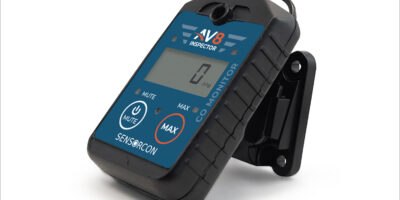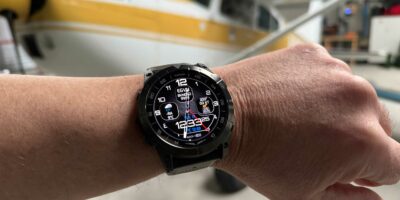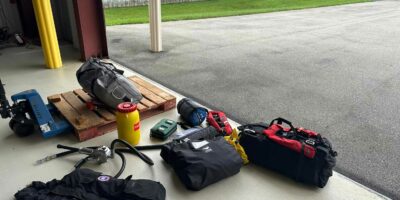In my experience, when you ask pilots what innovation they really want in a headset, they’ll most likely reply “no leads”. Well, one or two wireless headsets have appeared over the last few years, but there’s never been a unit from one of the big name headset manufacturers. That is until Lightspeed came along with its Tango ANR wireless unit; we got our hands on one of the first in the UK and took it flying.
Made up of two components, there’s the headset and the panel interface. Both use the same Li-ion rechargeable batteries, though there is a panel power option available, which eliminates one battery. Visually, the headset is not the slimmest, and it appears to use many of the plastic components of Lightspeed’s ‘budget’ ANR Sierra unit (tested in FLYER June 2014). That’s no bad thing as the Sierra is actually a pretty decent headset.
On one earcup there’s a large rocker switch for volume (but no individual left and right adjustment), while the other cup has a door for the battery. While there’s no reason to need frequent access to the battery, you do need to get to the USB charge point that also lives here. Unfortunately, the door is a poor piece of design. Seeming flimsy, and held shut with an awkward latch, it swings open in a manner different to how you might expect such a component to work.
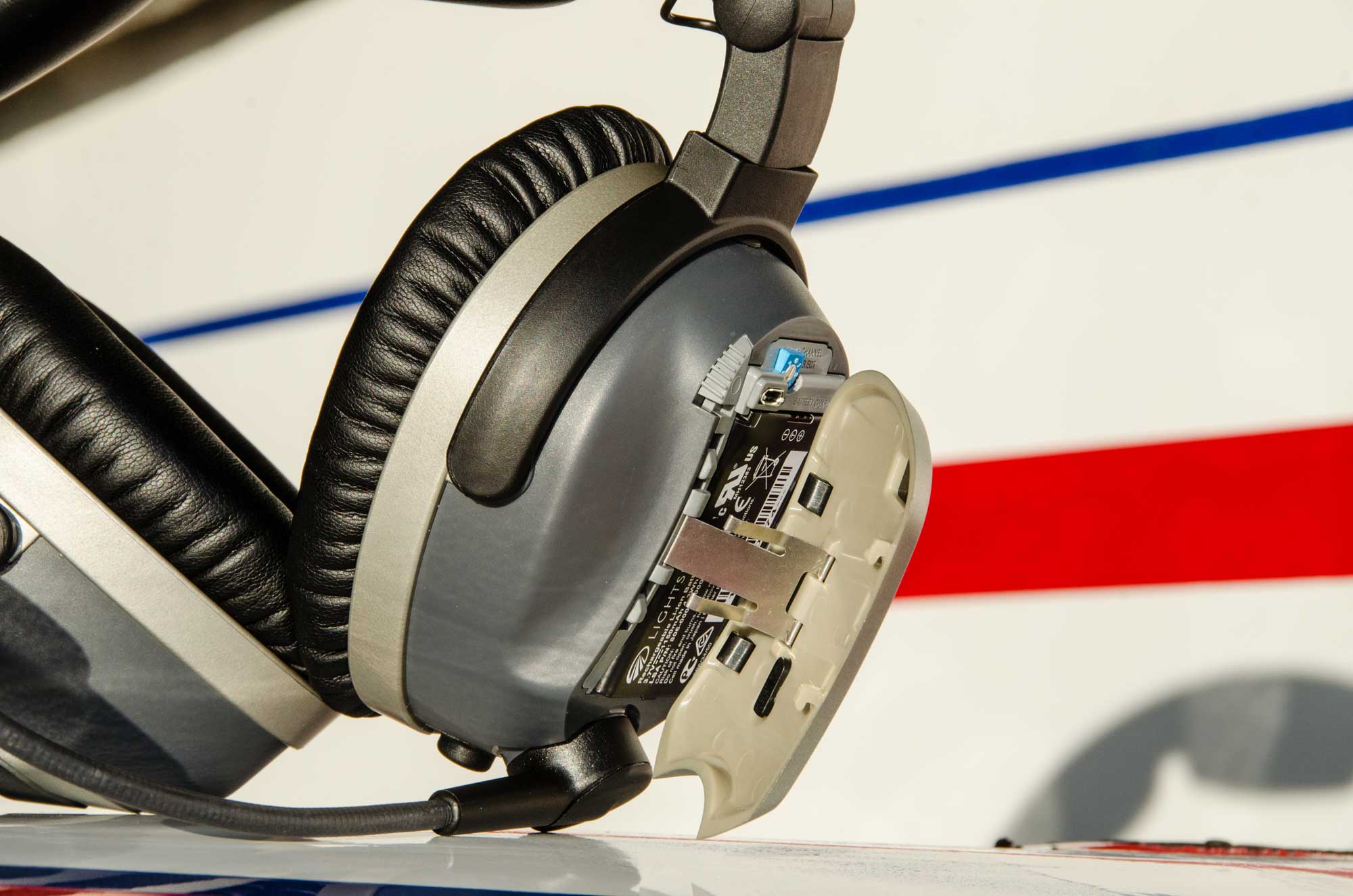
Battery box door on Tango headset is more complicated than it needs to be.
Pay attention though, as if you didn’t, then you’ll spend a while figuring how to close it. Quite why they didn’t make easy access to the changing port I’m not sure, but this will be an obvious fix if there’s a Tango v.2. “I’d just drill a USB charging lead sized hole in the door” was a remark I heard from our publisher. That might be a pragmatic solution, but when you’re paying this much money, then that shouldn’t be an issue you have to fix with a Black & Decker.
The microphone swings through 270º so you can wear it on the left or the right, though that’s less of an issue when you don’t have trailing cables to organise. Weighing 510g, it’s very comfortable to wear for extended periods. The headband pad and ear seals are nicely squishy, the latter seal really well around your ears even if you wear glasses like I do.
Tango interface: nicely designed brick
The panel interface module is a bit of a brick, but it is a nicely designed brick. A fabric cover gives access to change cable length (there’s 32in to play with) and to get to the battery compartment (spare batteries by the way, are £40). Good news here; the charging point is on the side and easy to get to… must have been different designers for each component.
There’s a backup cable to physically connect the module to the headset in the event you lose power and therefore the Bluetooth connection. With 41in of cable length, your headset should always be in reach if you need to plug in. Using the backup is easy, though it does disable the ANR. There’s a steel clip that can be used in three positions, plus tabs on both ends if you’re looking to anchor the unit firmly somewhere in the cockpit.
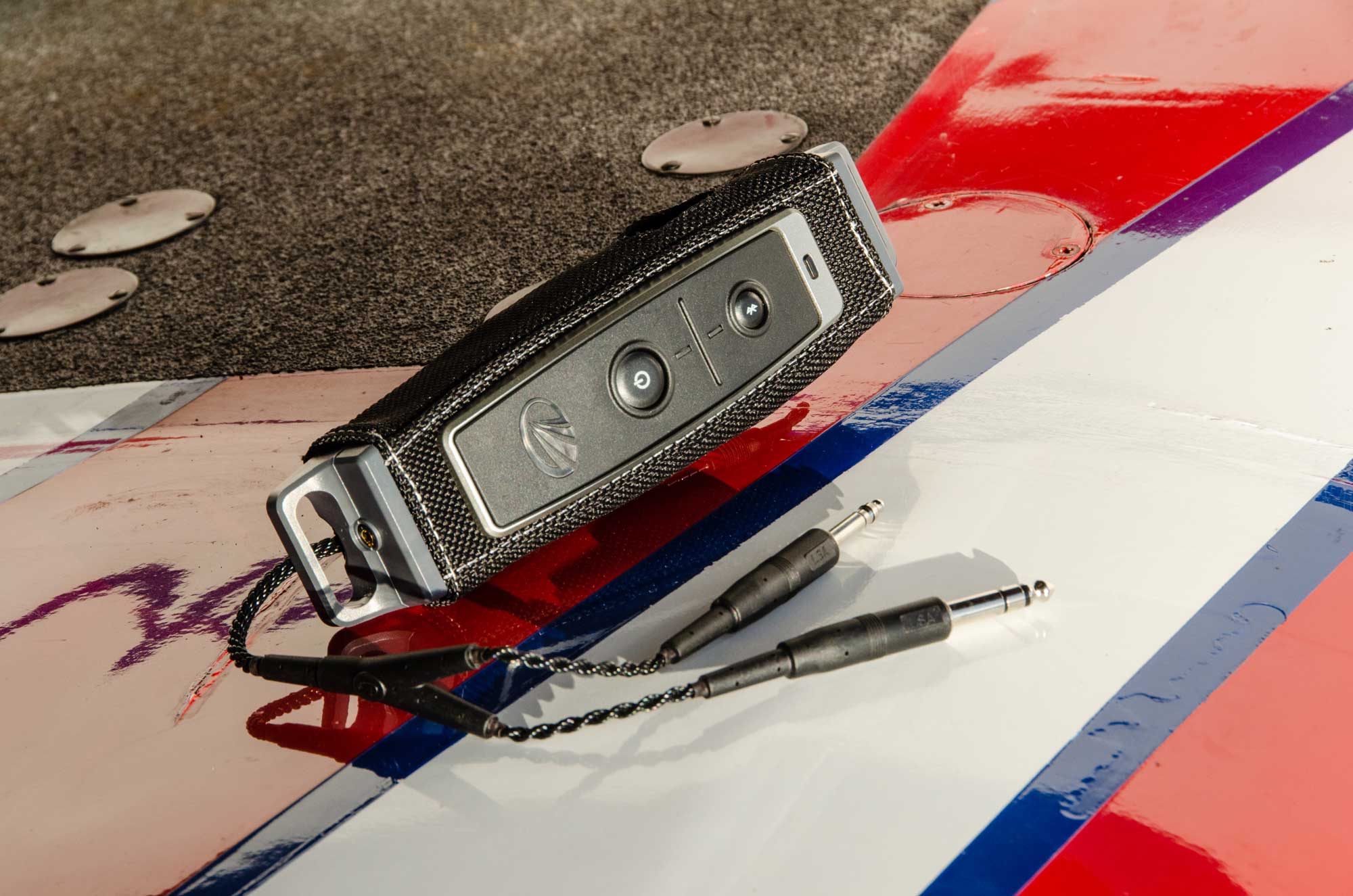
Battery box, bluetooth module and backup cables are all enclosed in this neat unit.
Neither Wi-Fi nor Bluetooth are used for the link between the two units, but instead Lightspeed has developed its own proprietary ‘Lightspeed Link’ connection. Whatever magic they’ve come up with, it proved solidly reliable through all testing. The promise is that up to six Tangos can be used together without interference – perfect if you’ve got something with lots of seats. Tango pairs easily with other devices via Bluetooth too. It was a work of seconds to link my phone, and making a call worked fine when I could get a good signal.
The audio is good, if a little ‘tinny’. I don’t think Tango is quite as good as Lightspeed’s own Zulu 2, and is some way behind the likes of AKG and Bose. For me this was most apparent when listening to myself speak – sometimes it was like having your head in a box. That said, radio transmissions were clear to make and receive with good side tone. If you’re streaming music and you receive a transmission, ComPriority quickly but gently lowers, not completely though, the volume of music and other audio from auxiliary devices. It’s pretty fundamental to enjoying music in-flight; there’s nothing worse than stop-start audio to ruin that experience.
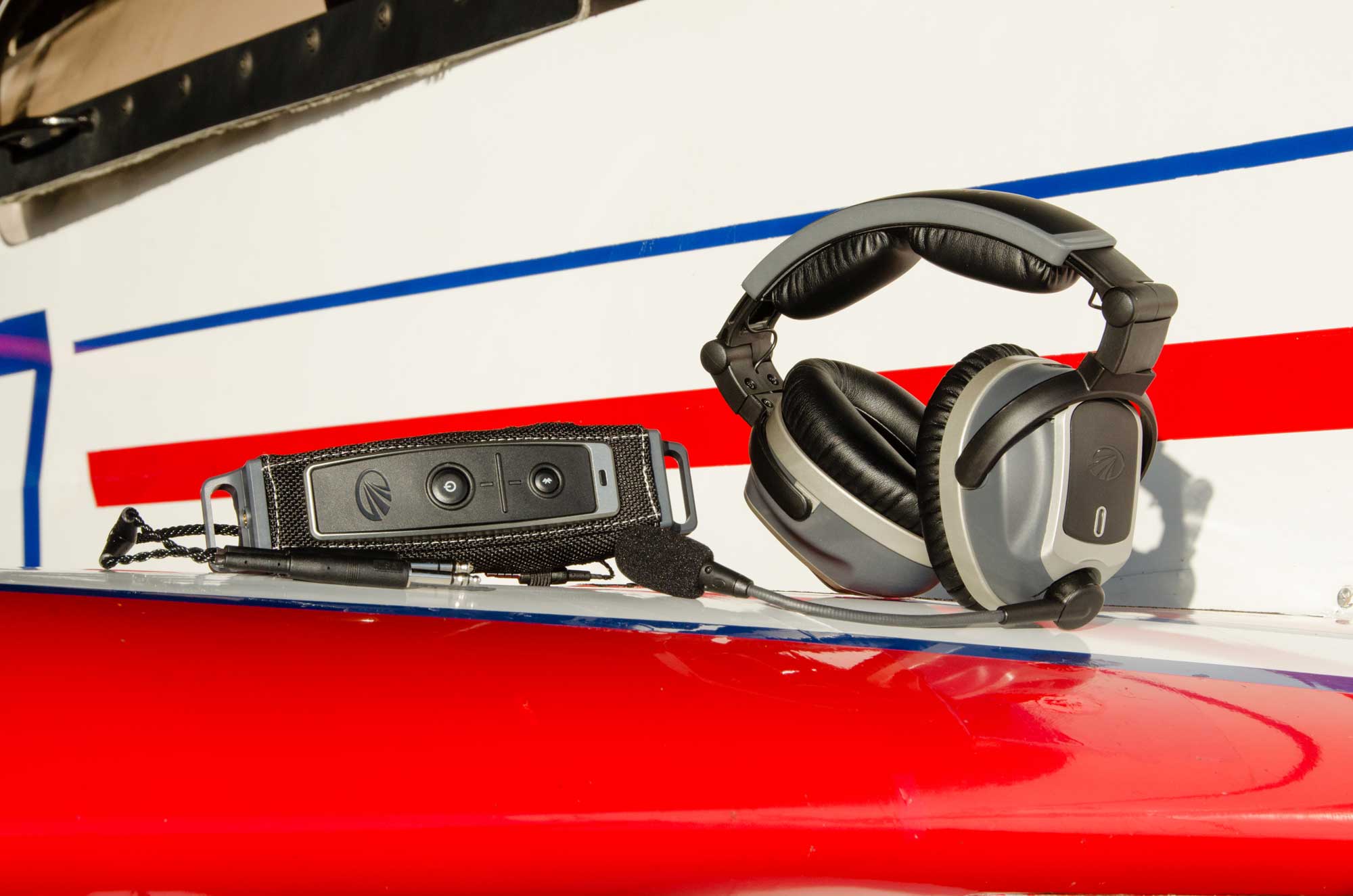
The Tango’s earcups aren’t small but they are comfortable.
Battery life is promised to be 12 hours, and there’s a visual and audible warning when there’s ‘only’ three hours charge remaining. As our test unit got recharged after 4 hours of use, I never got to hear this though. Auto-shutoff on both components worked perfectly; I don’t recall turning the units off on purpose once.
I hate cockpit clutter, and the running of headset wires is a bit of a ritual each time I fly to keep things tidy and safe in the cockpit. So for that alone the Tango scores highly with me.
For passengers too, no wires would be one less distraction. Overall, it’s a really great package for the price point, given that you’re getting something wireless, and is only spoiled by that really awful door on the headset. That will be an easy fix though.
At £150 more than the Sierra, and £70 more than a Zulu 2, the Tango is also a similar price to a non-Bluetooth Bose A20. The A20 definitely has better ANR and all-round audio, but it also has those pesky wires, and without fail the wireless headset idea was definitely popular with every pilot I loaned the Tango to.
One A20 user was even ordering a pair, as while he loves his Bose, he likes the idea of a wire-free cockpit more. I think for that reason, until Bose come out with a wireless product of their own (and frankly I always thought they would be the first to do that), then if you’re in the market for an ANR headset, then you really should give the Tango a try. – Ed Hicks
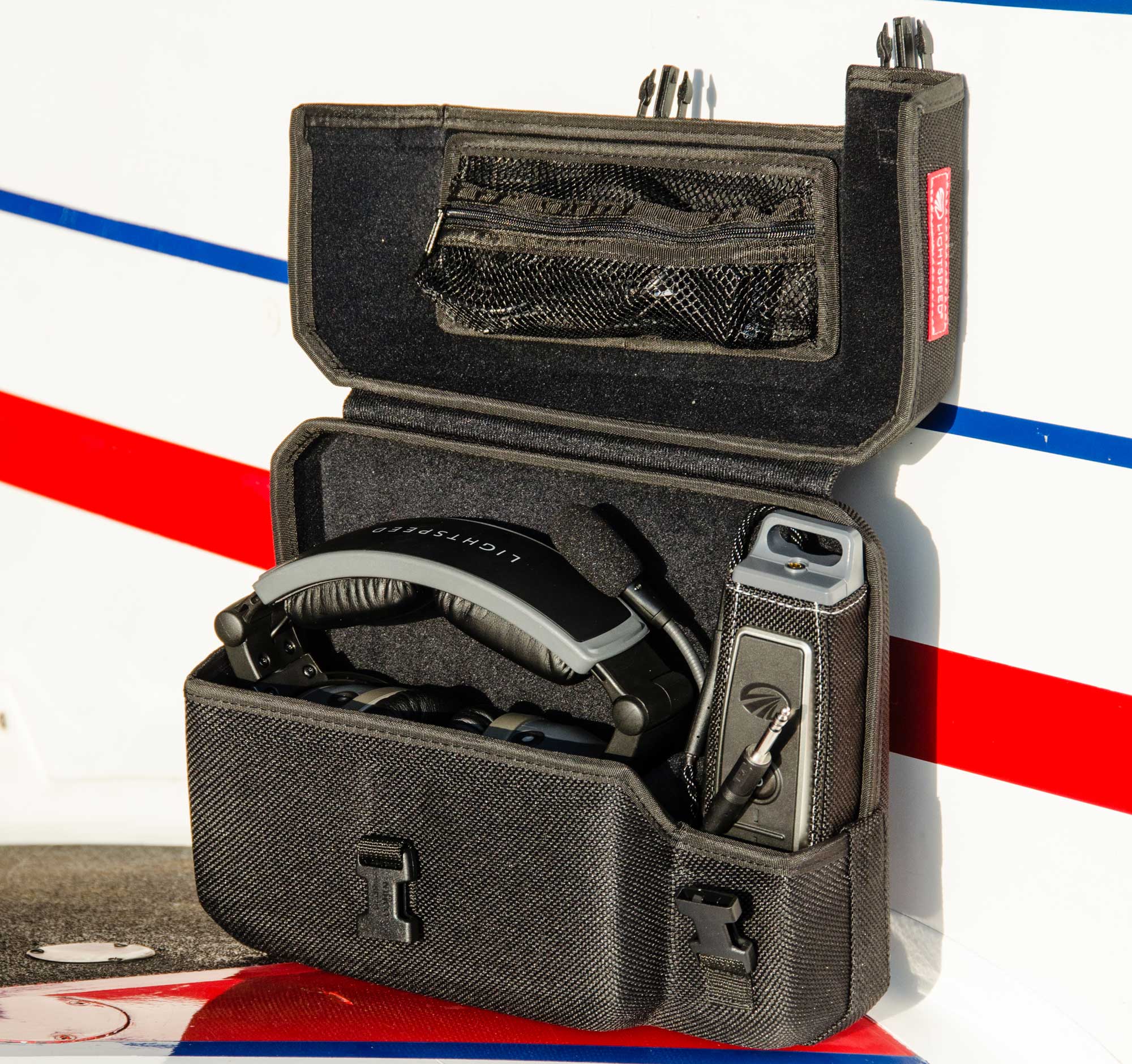
Now that’s what we call a headset bag!







